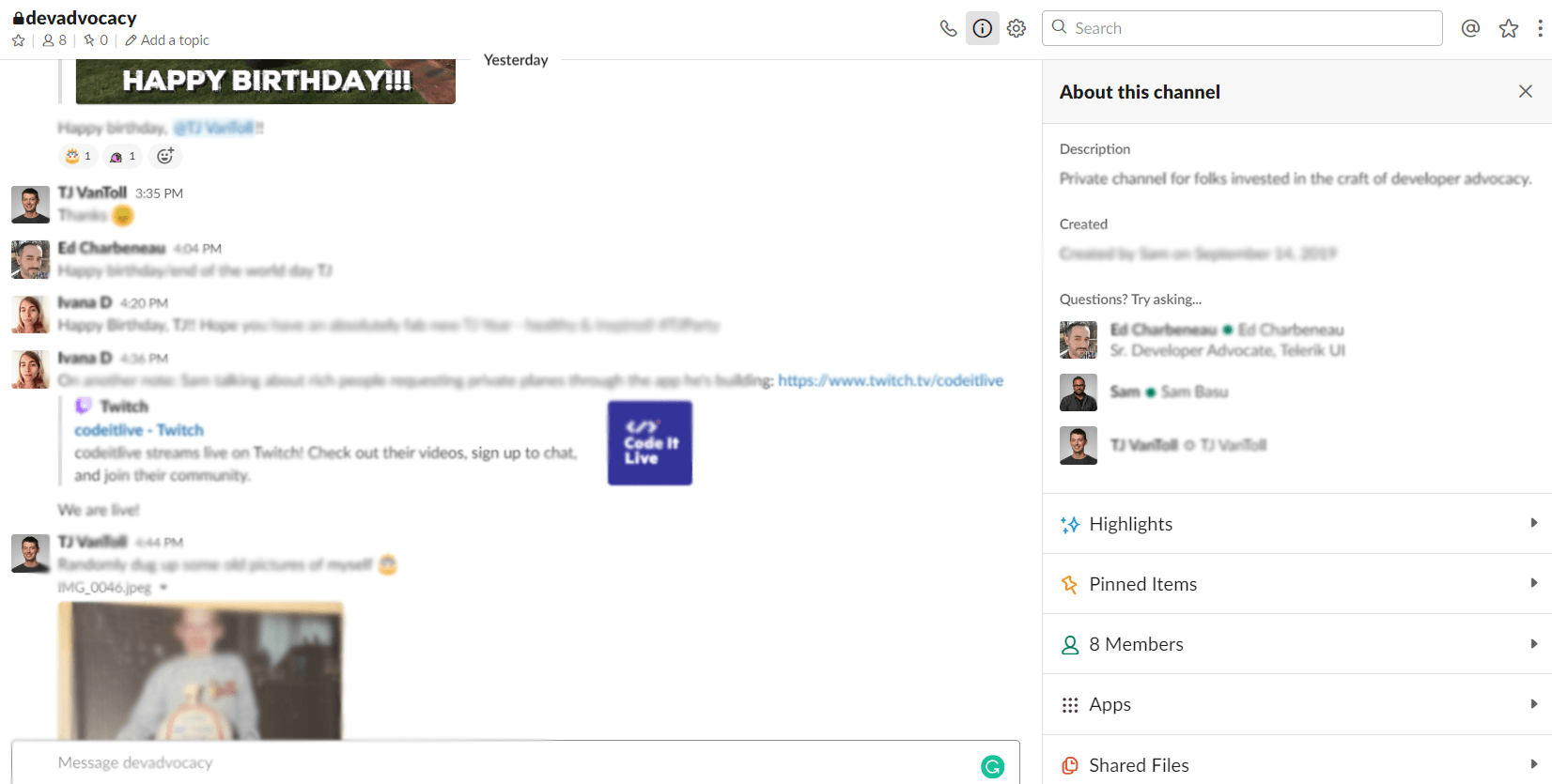Remote Working Tips: The Personal Side of Working From Home

Working remotely can be a challenge. In light of recent developments during the COVID-19 (coronavirus) outbreak, here are some tips for people now working from home with a dispersed team.
I usually work in an office, but a lot of the time I work with people on the other side of the pond. And I love it. Although I sometimes do feel lonely, with my team being so far away.
There is certainly a learning curve to working with people remotely. So here you go, folks, some of the wisdom I’ve accumulated while working with a remote team.
Know Thyself … and Others
My team across the pond is all cool kids and I have met them IRL (in real life) once or twice. This, I must admit, has helped a lot, so I’m lucky like that. But not everyone will be that fortunate. Whether you like the people you work with over the wire or not, one thing is certain—getting to know them will serve you well.
When working with people in the same space, you get to know them pretty well naturally. This often happens without you realizing it even. You have a chance to observe people’s habits, get to know their tone, their general demeanor, interests, rational and irrational behaviors, everything. After all, you do spend most of your waking time with them.
Working in the same space, you will have those structured meetings, of course. But you also have the opportunity to use small pockets of time when you catch each other making tea to hash over the details of something you’re working on together. You end up discovering shared interests, exchanging books or ideas casually, developing inside jokes, too.
Willingly or not, your brain registers details about the people with whom you interact. It builds a database and uses it as a reference every time you sit to chat with someone. You adjust your tone and communication styles according to those silent clues we all give.
If you’re flexible enough, this will allow you to communicate better and more efficiently with people, the more you know them. Who knows, you might even make a friend (and believe me, I know what a nightmare making friends as an adult can be).
This flexibility may well seem impossible at first glance when you work with peeps based elsewhere, though. You don’t have the advantage of going off body language or facial expressions. No matter how many cameras you turn on, it’s not the same. But realizing the advantage of knowing the people you work with online so well, too, can you pass on the opportunity? No way!
You want to get to know them? You have to work for it. You want to have a quick 5-minute chat? You have to sync those calendars. You want to communicate efficiently? You have to put in the time.
It’s an effort, but it’s so worth it! (Remember my remark above about being efficient, but also making friends.)
“But how? How do we do that, baby Yoda of the office universe?” you ask.
Simple, young Padawan, be annoying.
Let a bit of your personality shine through like you do at the actual office. It will feel super cringe at first but that’s OK. Sharing your best self with your colleagues online is important for them to be able to work better with you, too.
Believe me when I say I know how weird it is at first. Pinging my boss with a meme I think she’d lol at? Cringe! No, not cringe, communal. Sending a colleague an article I found funny and I suspect they’d be interested in as well? Invasive! No, not invasive, inclusive. And waiting for that reply in the team chat when you’ve cracked a joke for the first time? Oof … it’s worse than waiting for a date to reply after you’ve said you had a fab time with them.
Don’t go overboard, but try to consciously let your human self through. You won’t be able to know their body language that well no matter what you do, but overcompensate by knowing more about them—their work schedule, their interests, are they a morning person or is it better if you don’t ping them before their morning coffee. Share this about you, too. Communicating who you are to one another compensates for not being able to sit together all the time.
Utilize Your Channels Like a Gondola in Venice
Well, OK, let’s let our personalities shine and bring our best selves to our virtual office space, and be all happy and communicate better and stuff. Simple. Let me stop you right there—it’s actually not that simple. You have to work for it, remember?
To do all of what we talked about until now, you have to make space for it. You have email for the more serious stuff with one meme thread buried in your mailbox, and you have Skype for meetings and when you need to ping someone with a question or a quick update. Those are fine, but think about yourself at the office. Do you only have meetings and answer emails? No. You have short chats and long chats, you do lunch in a common area, you might sit and chat on the couch by your desk, or you might go to the balcony for some air and a laugh.

Each space we occupy we have generally categorized, too. Business here, party there, etc. This is another clue our brain uses—I can say this here, but I better leave that for there. I can behave like this on a couch, but not like that on a chair. So, do the same online. Create spaces for different occasions. Add a team chat for all the random things you want to share: cringe inside jokes, memes, work questions you’re too embarrassed to ask someone else (we all have those … and the topic of how those need not embarrass us is a whole other story entirely, so we’ll leave that for now).
Schedule some team time (shout to TJ VanToll and Sara Faatz who set up our monthly team chat) and 1:1 catch-ups, which are specifically dedicated to the human side of things—rants, jokes, plans, recommendations, funny stories.

Much like the different types of interactions face to face, those don’t merely act as random slots where you can all be silly, they will set the much-needed group dynamic in a team. The lack of structure might bring out a conflict and allow you to resolve it then and there, saving you from spending time on an official response and from developing unnecessary resentment or stress.
The freedom of those interactions will also allow for ideas to start bouncing around and voila—inspiration might strike, someone might get a brilliant spark and we all end up going out of it ready to rock, ready to create and ready to rumble!!!
This is what different types of interactions and channels do. They act as the stimulating environment we unwillingly create in a physical office.

So having that essential knowledge of who the people you work with are outside of work, what their interests and pet peeves may be, where their boundaries lie; alongside essential group dynamic that will make you feel like a real team—with everyone playing a certain social role; sprinkled with multiple channels and garnished with a lot of personality (or as much as you have, no need to overdo anything—stay comfortable and safe) is what I have found to be the essentials of working with my remote colleagues, work buds and teammates.
Consciously working toward compensating the lack of face-to-face time with attention to the humans on the other side of the line has helped me become more efficient with them online and with others offline, too.
But the biggest benefit is that it allowed me to make that many new friends.
So, I do hope you get to try some of what I shared. It worked like a charm, or it didn’t work at all? Comment below and share the wisdom you’ve accumulated. We’re all on that same learning curve.
In the meantime—stay healthy, stay safe, stay human (at and outside of work).

Ivana Dimitrova
Ivana was a social media specialist, part of the Developer Relations team here at Progress.
